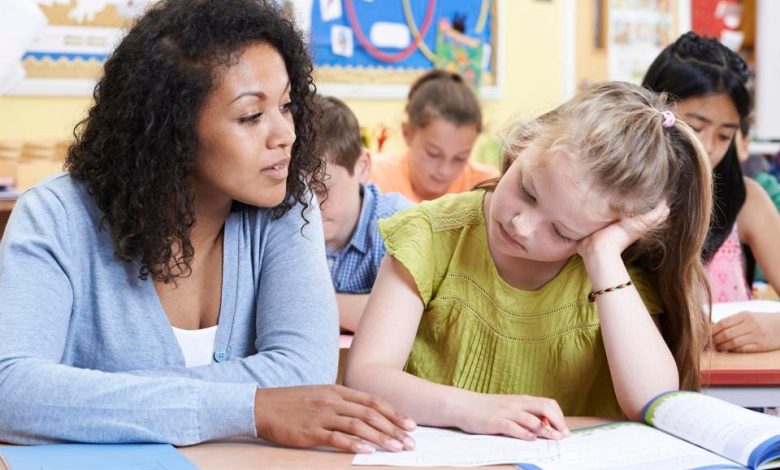Why Home Learning is Beneficial for Young Children?
Home Learning is Beneficial for Young Children?

Home learning has become increasingly popular with parents looking for ways to help their children learn and develop outside of the classroom. Home learning can offer many benefits, such as improved self-confidence and greater independence. In this blog post,
we will explore the advantages of home learning and how to create a home learning environment for your children. We will also provide some tips for engaging young children in home learning activities. By the end of this post, you should have a better understanding of the benefits of home learning and how to create a successful home learning environment for your children.
Read More Article: Influencer John Jezzini
Benefits Of Home Learning
There are many benefits to home learning for young children. These include creating a stronger family bond, providing personalized education, embedding early childhood development skills, enabling children to learn at their own pace, giving parents the opportunity to teach topics of interest to their child, and promoting independence and self-discipline.
By engaging in home learning, parents are able to provide their children with a richer educational experience than they would receive in traditional school settings. This is because home learning allows for more creative and engaging types of learning activities that promote both cognitive and emotional growth. In addition, home learning promotes a deeper understanding of concepts that students would be expected to learn in school. For example, when kids learn about math concepts at home instead of in school, they develop an understanding of how math works beyond the classroom setting.
Not only does home learning allow children to learn at their own pace as they grow older, it also provides them with an introduction to learning beyond the traditional school system. Homeschooling can be a great way for kids who want more individualized education or who need more flexibility than traditional schools can offer. By completing extracurricular activities outside of the classroom setting (such as math clubs or science fairs), kids are preparing themselves for future college or career endeavors.
Finally, one of the best reasons for parents to homeschool their children is that it serves as an introduction to lifelong learning opportunities. By exposing young kids to different types of subjects early on (such as history or literature), they’re building skills that will help them throughout their lives. Plus, by homeschooling your child you’re encouraging them to develop problem-solving abilities and critical thinking skills – two essential ingredients for success in life.
There are many benefits to home learning for young children. In a stress-free environment, young children can learn at their own pace and explore topics that interest them. This is important for building confidence and independence, as well as reinforcing a lifelong love of learning. Additionally, home learning helps to build cognitive skills such as memorization and problem solving. It also encourages creativity by providing opportunities for the child to explore new ideas and experiences.
Home learning also promotes an understanding and appreciation for diversity. By exposing young children to different cultures and viewpoints, they learn how to be tolerant of other people’s differences. This is an important skill that will serve them well throughout their lives. Home learning also promotes developmentally appropriate literacy and math skills by providing opportunities for the child to practice these skills in a safe and fun setting. Finally, home learning stimulates natural curiosity in children which drives them to further explore their world. These are all important factors in helping young children develop into strong, successful adults!
Read More Article: Effectiveness of Teaching Design and Activities Reading Skills
How To Create A Home Learning Environment
With so many educational options available today, it can be hard to know which is the best for your child. Fortunately, home learning is a great choice for young children. Home learning allows children to be engaged in hands-on activities and learn at their own pace. This allows them to focus on the material at hand and build fluency in the subject matter. Additionally, utilizing gadgets and technology to supplement learning can allow your child to focus on the material while also being able to interact with others.
In order to create a home learning environment that is both comfortable and productive, you’ll need some supplies. First, designate an area of your home that will serve as your learning space. This should be a room that is clean and has good lighting – both of which are important for optimal learning. Second, make sure that you have plenty of books, writing implements, and other materials available for use during class time. Finally, establish a daily schedule that includes breaks so that your child can recharge energy levels before continuing with their lesson plan. Make sure also to incorporate physical activity into your child’s lessons in order to promote healthy development overall. And lastly – don’t forget about your child! Involve them in every step of the process by actively engaging them in readings and activities while they’re at home learning!
Tips For Engaging Young Children In Home Learning
There’s no question that home learning is beneficial for young children. Not only does it provide them with the opportunity to learn in a comfortable and familiar environment, but it also encourages critical thinking and problem-solving skills. Below, we’ll outline some tips for engaging young children in home learning.
First and foremost, make sure that the lessons are short and engaging. Kids don’t have the patience or energy to sit through long lectures, so short and sweet is the way to go. Also, use videos, games, and other interactive tools to keep kids engaged. This will help them to learn more efficiently and effectively.
Another key factor in engaging young children is allowing for creativity and expression. This includes things like coloring books, drawing pictures, or making crafts on your own time without having to wait for class time to do so. Additionally, be sure to include movement into your lessons as well – whether that’s acting out stories or singing songs together as a class. This will help kids stay engaged while they’re learning and helps prevent boredom from setting in.
Last but not least is fostering a loving and nurturing environment for them to feel secure while they’re learning – this is key! Make sure that you spend time talking with your child about what they’re studying so that they feel comfortable asking questions (and know that you’ll be there to answer them). Additionally, make sure that you set aside opportunities throughout the day for free play – this will help kids stay motivated throughout their schooling experience.
To Wrap Up
Home learning is an invaluable tool to help children reach their educational goals while providing an engaging and enjoyable environment in which to learn. With the right resources and a little creativity, parents can create a home learning environment that is both stimulating and supportive of their child’s academic development. By encouraging active participation in the learning process, parents can ensure that their children are receiving a quality education even when school is not in session.




